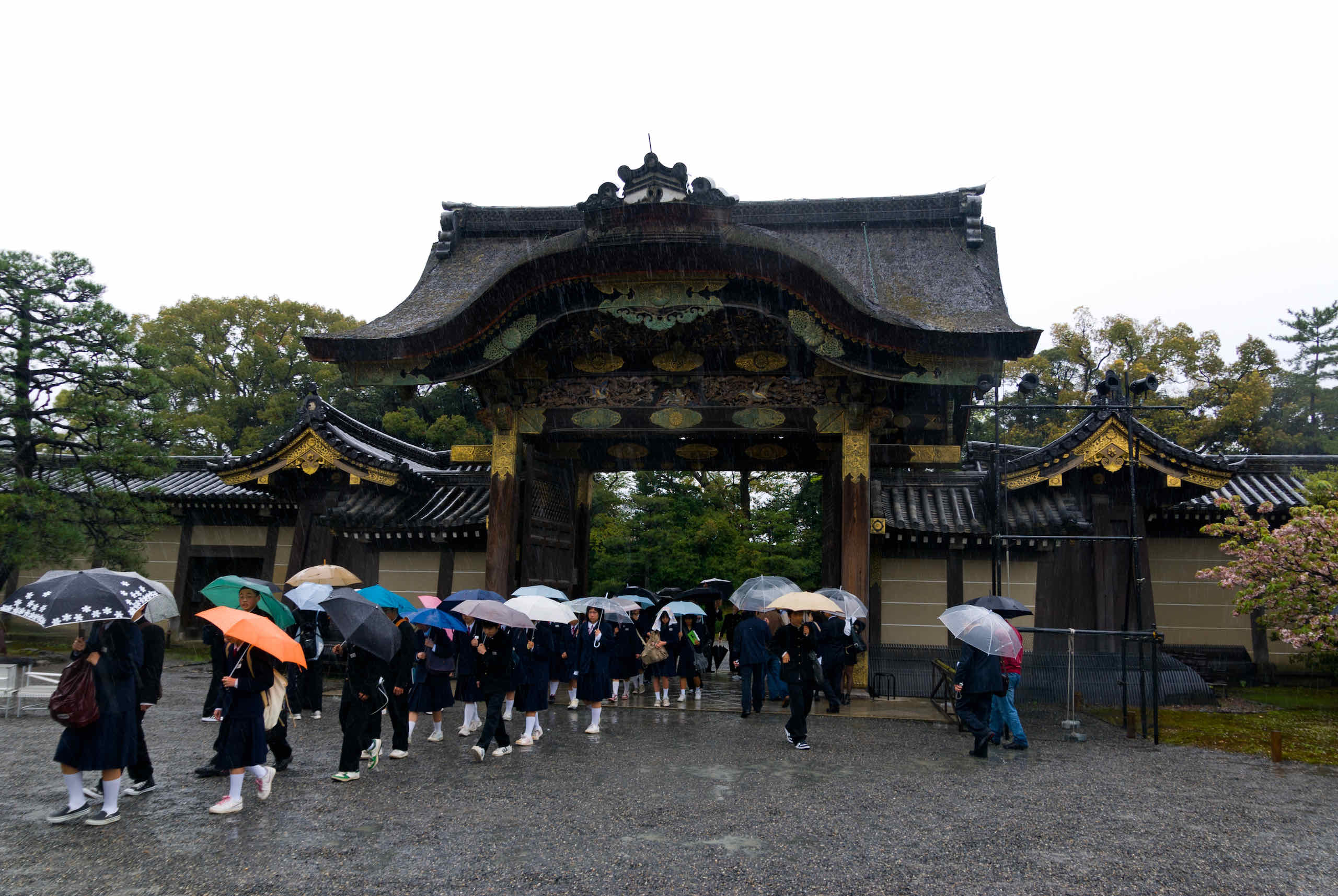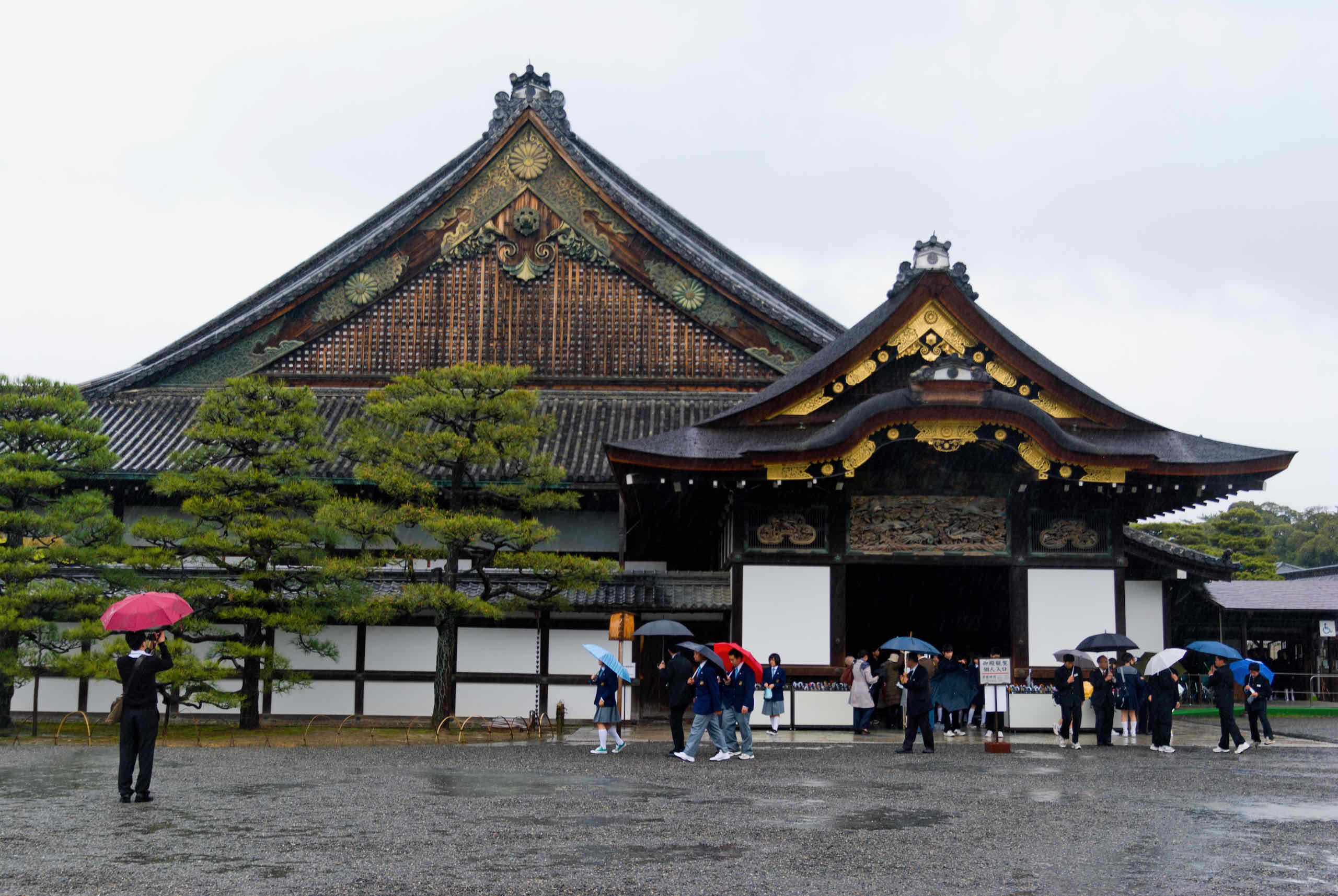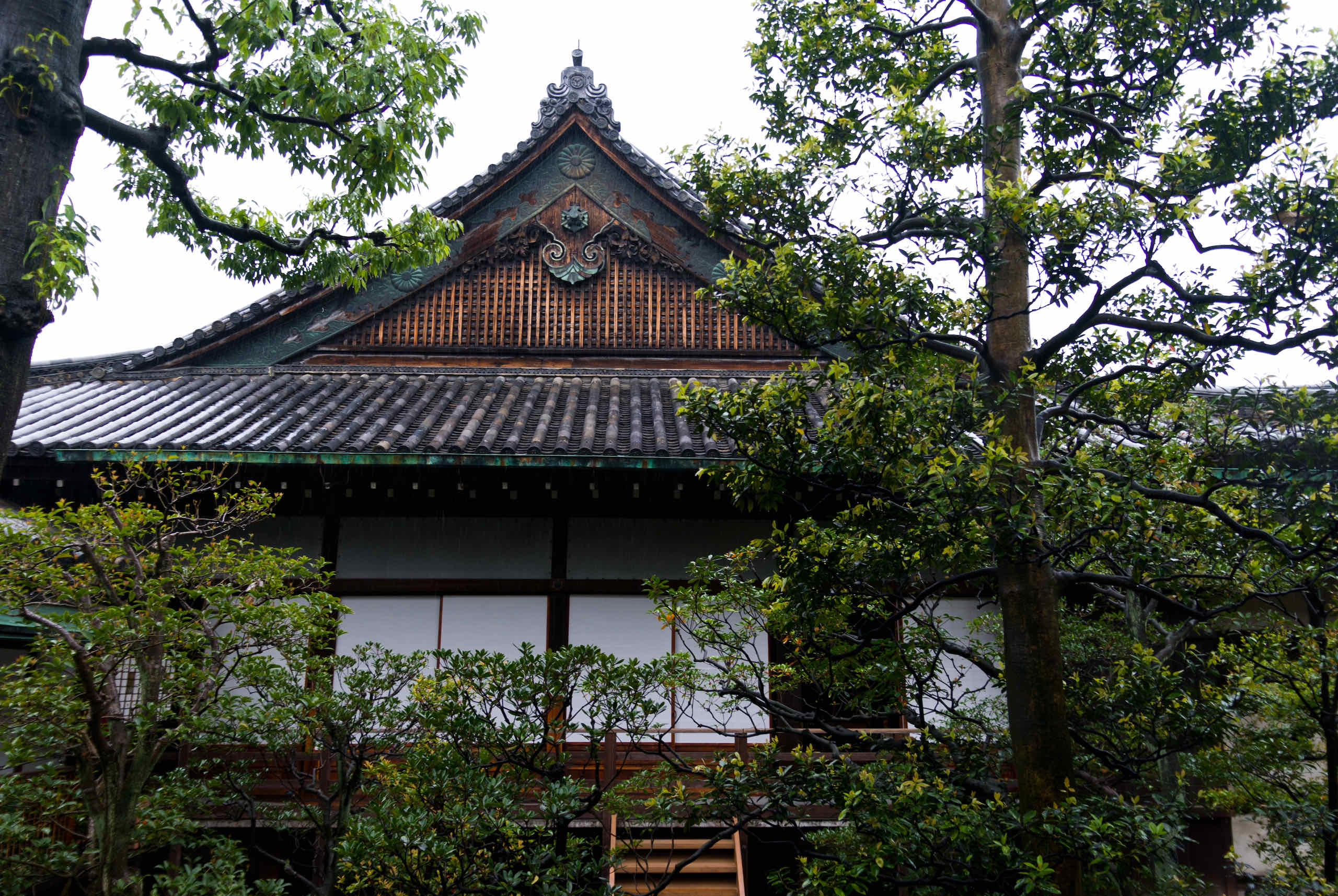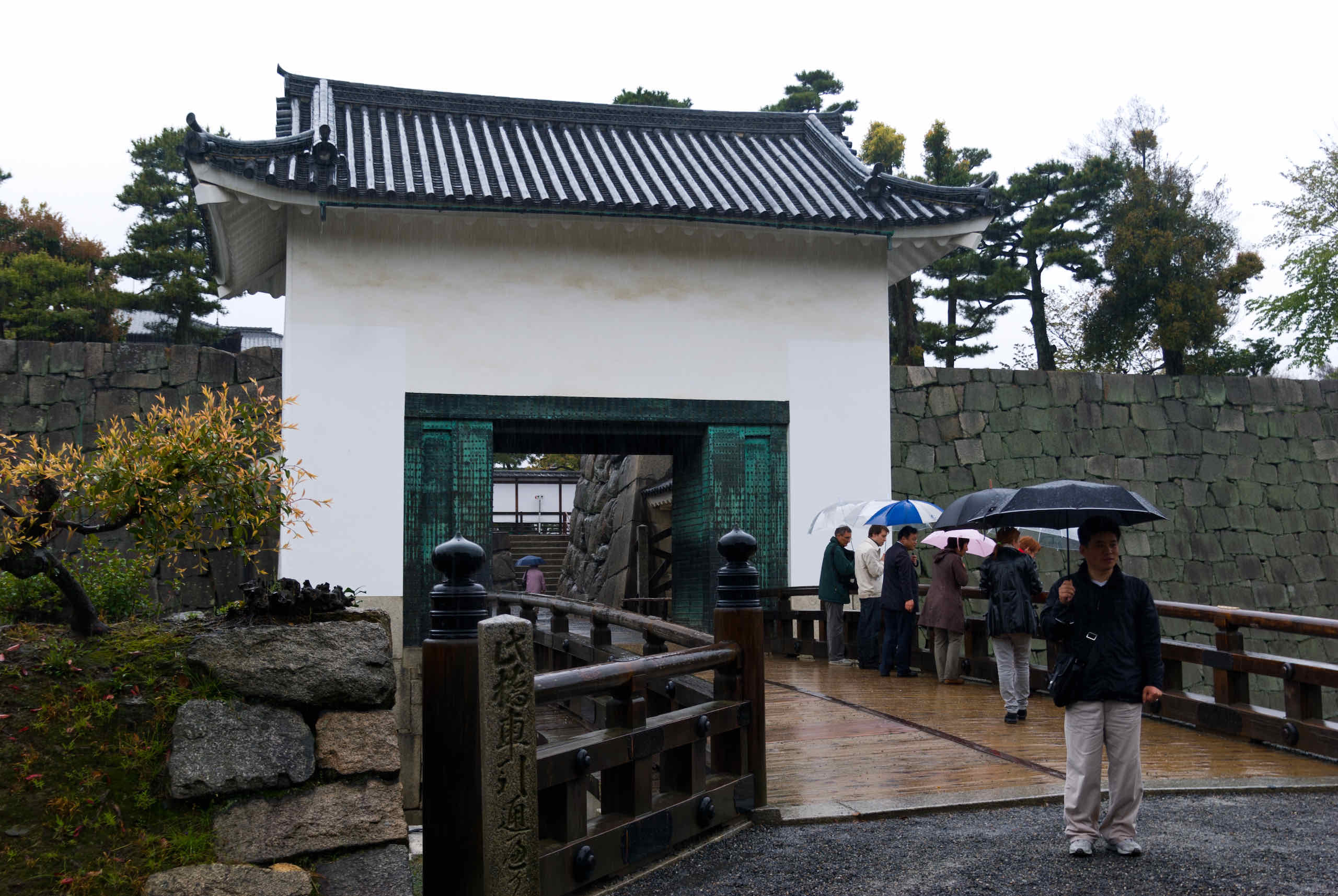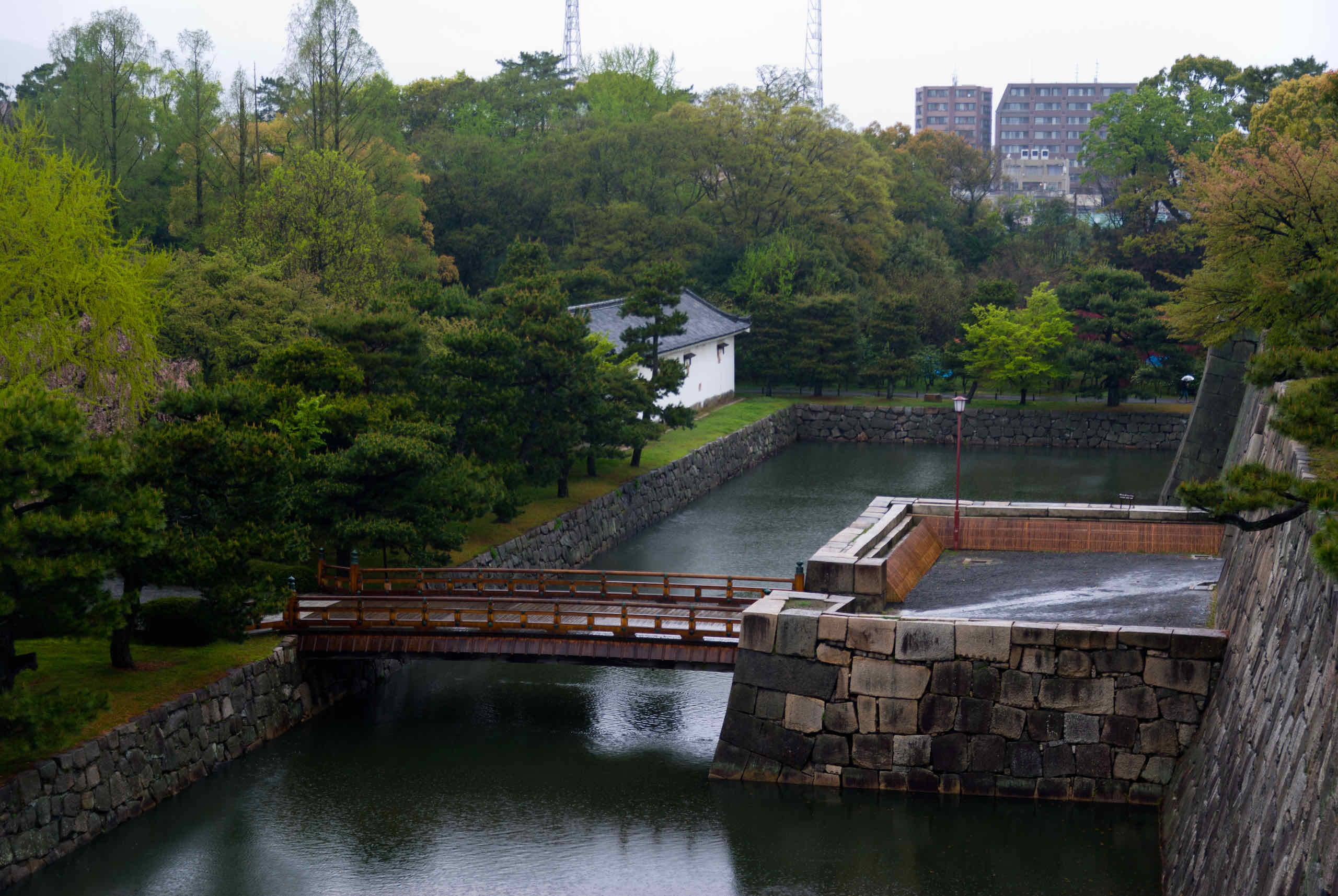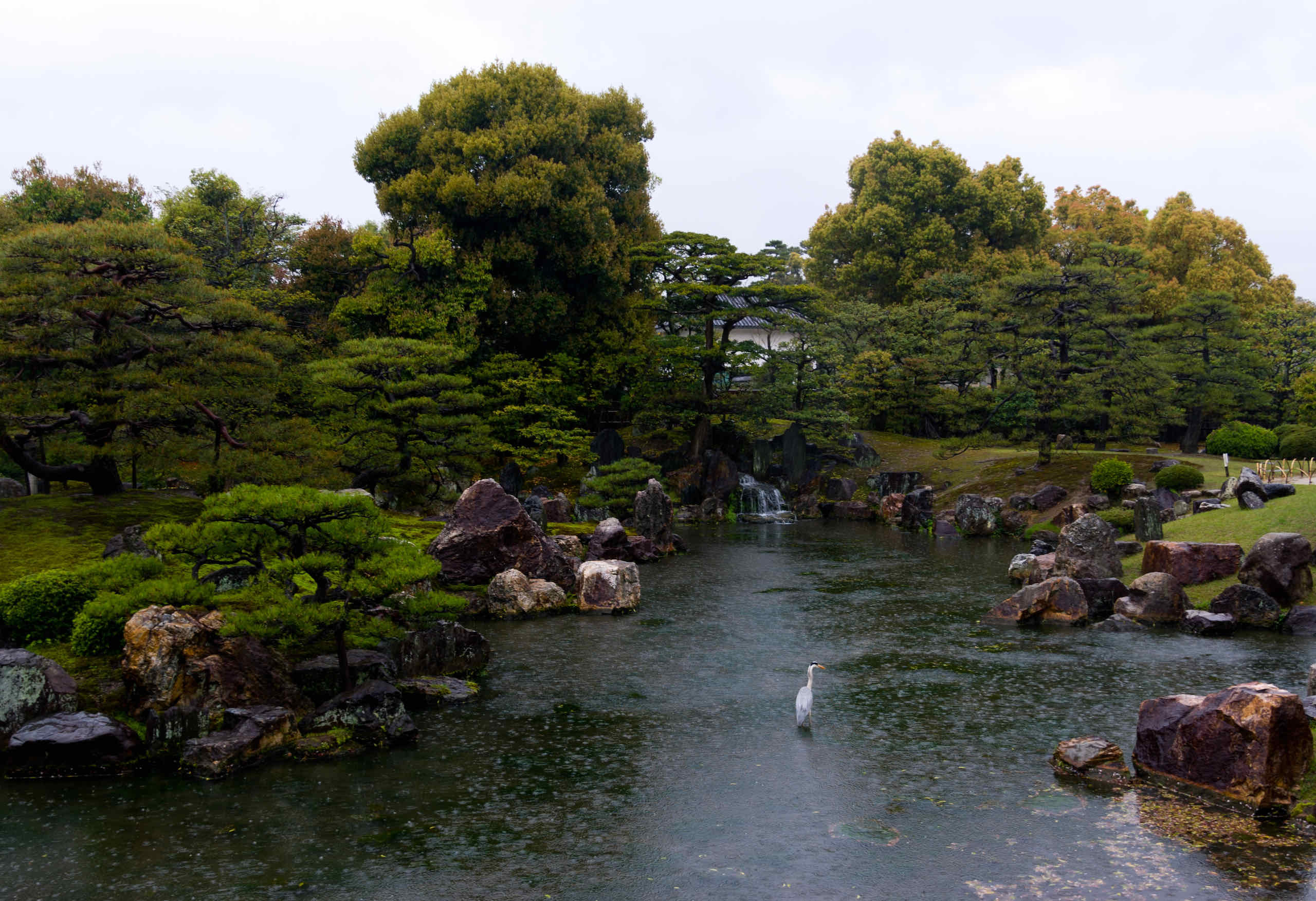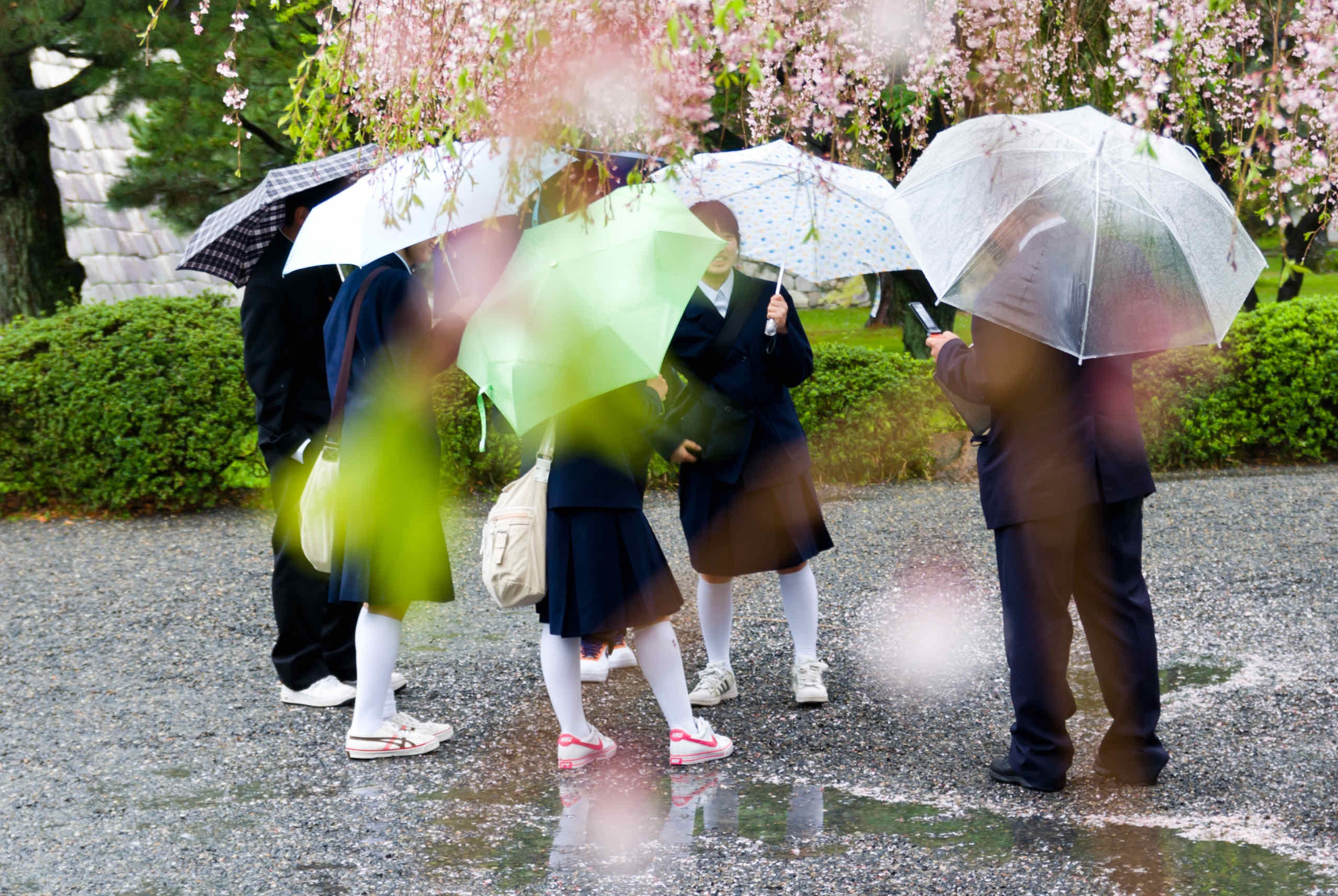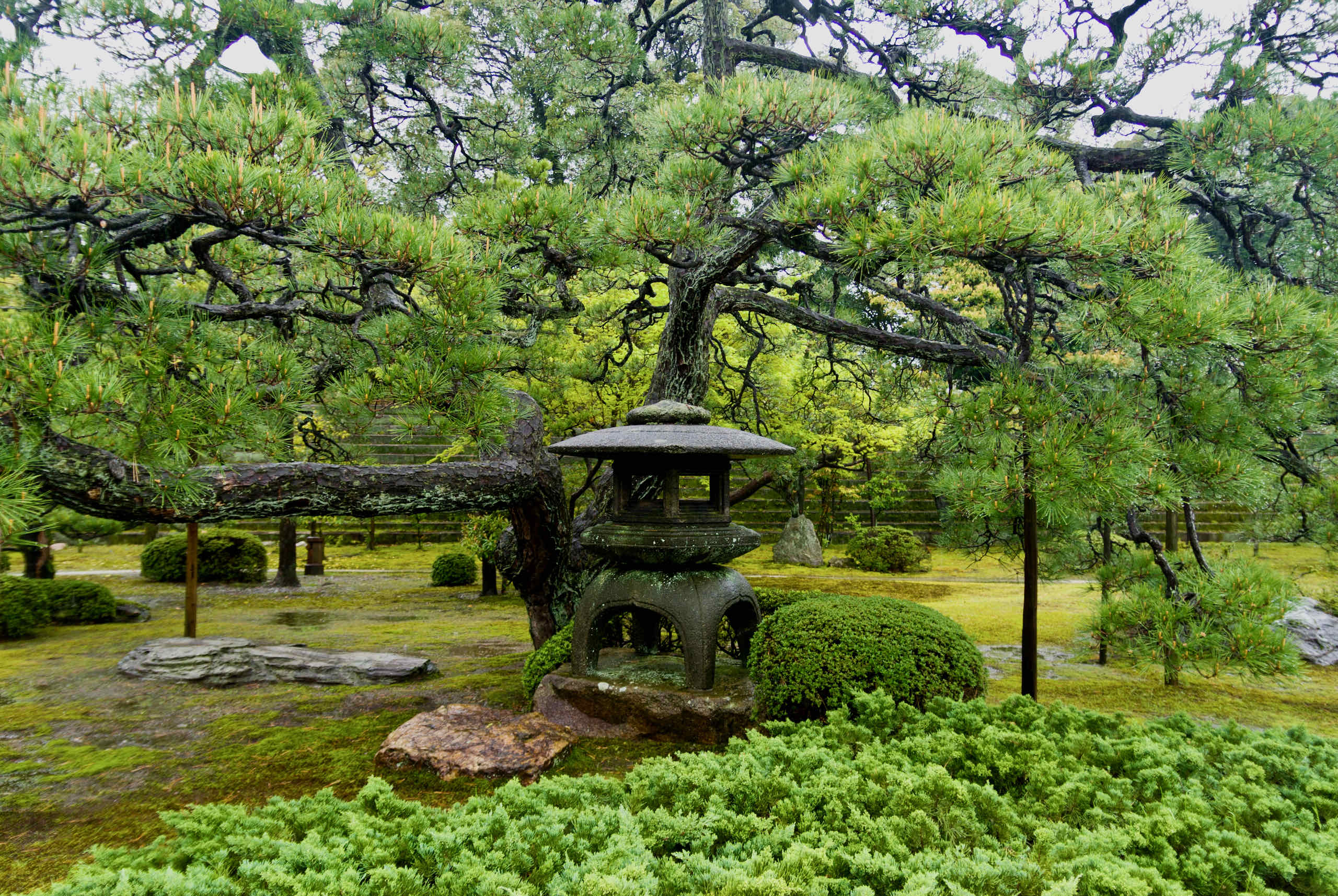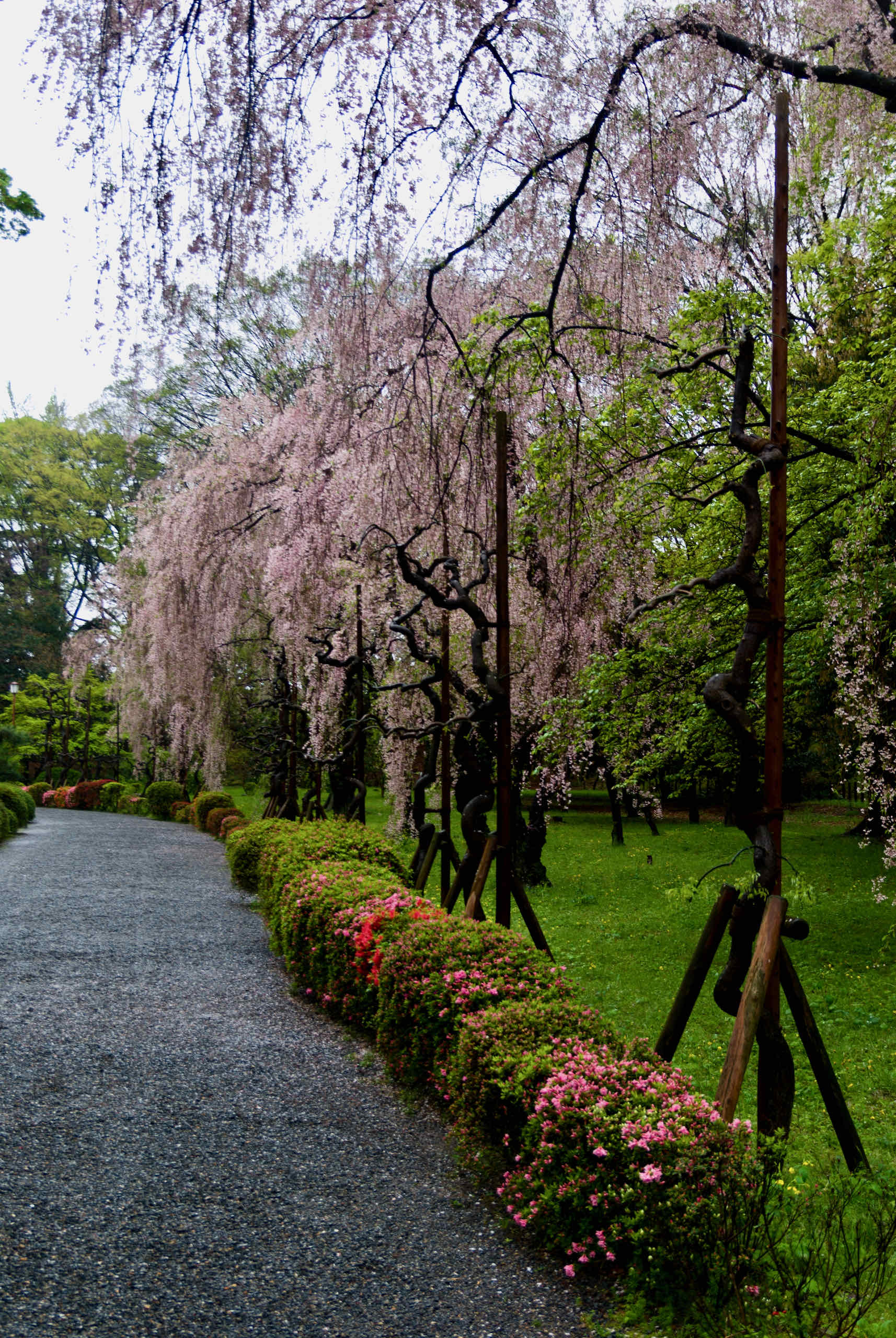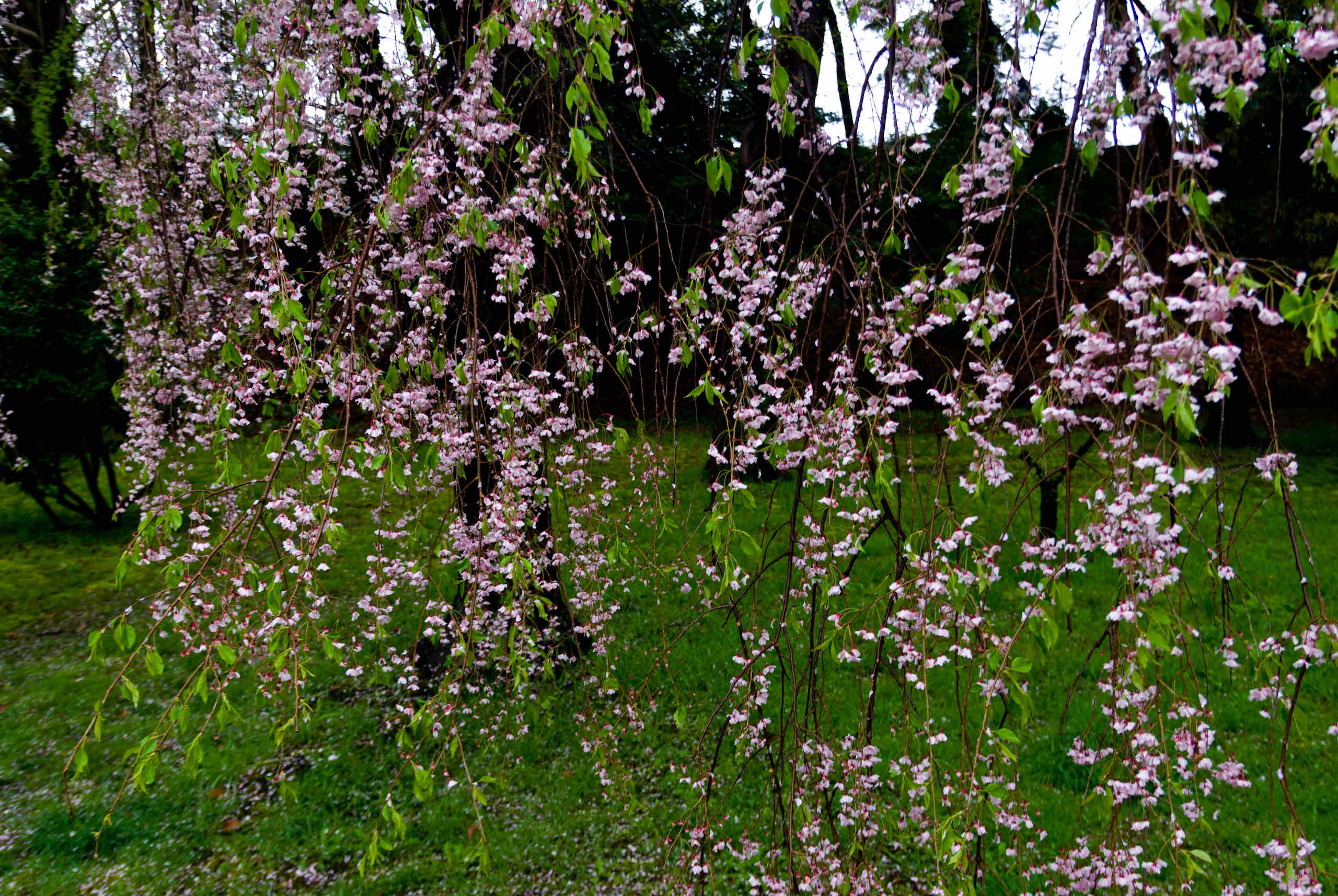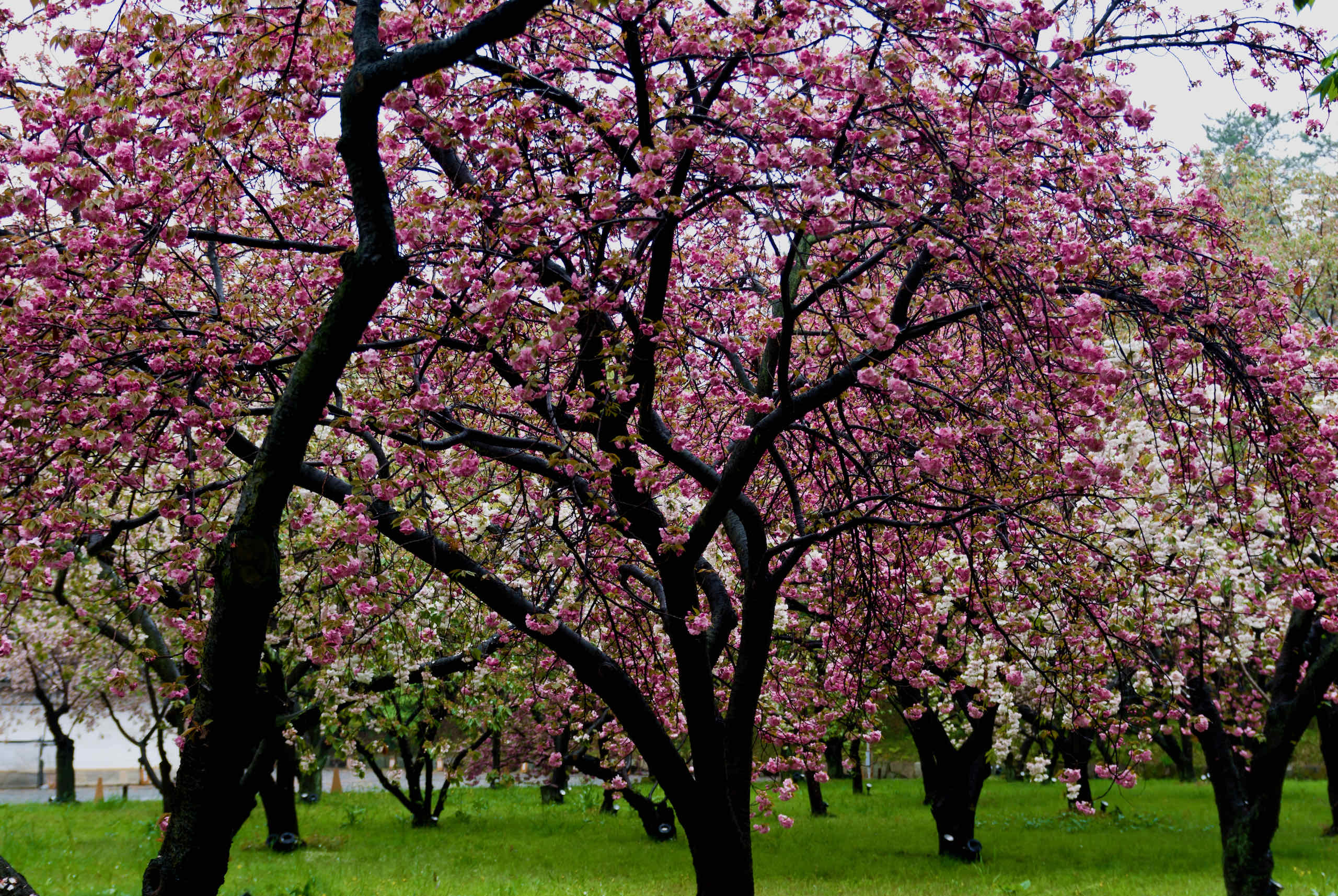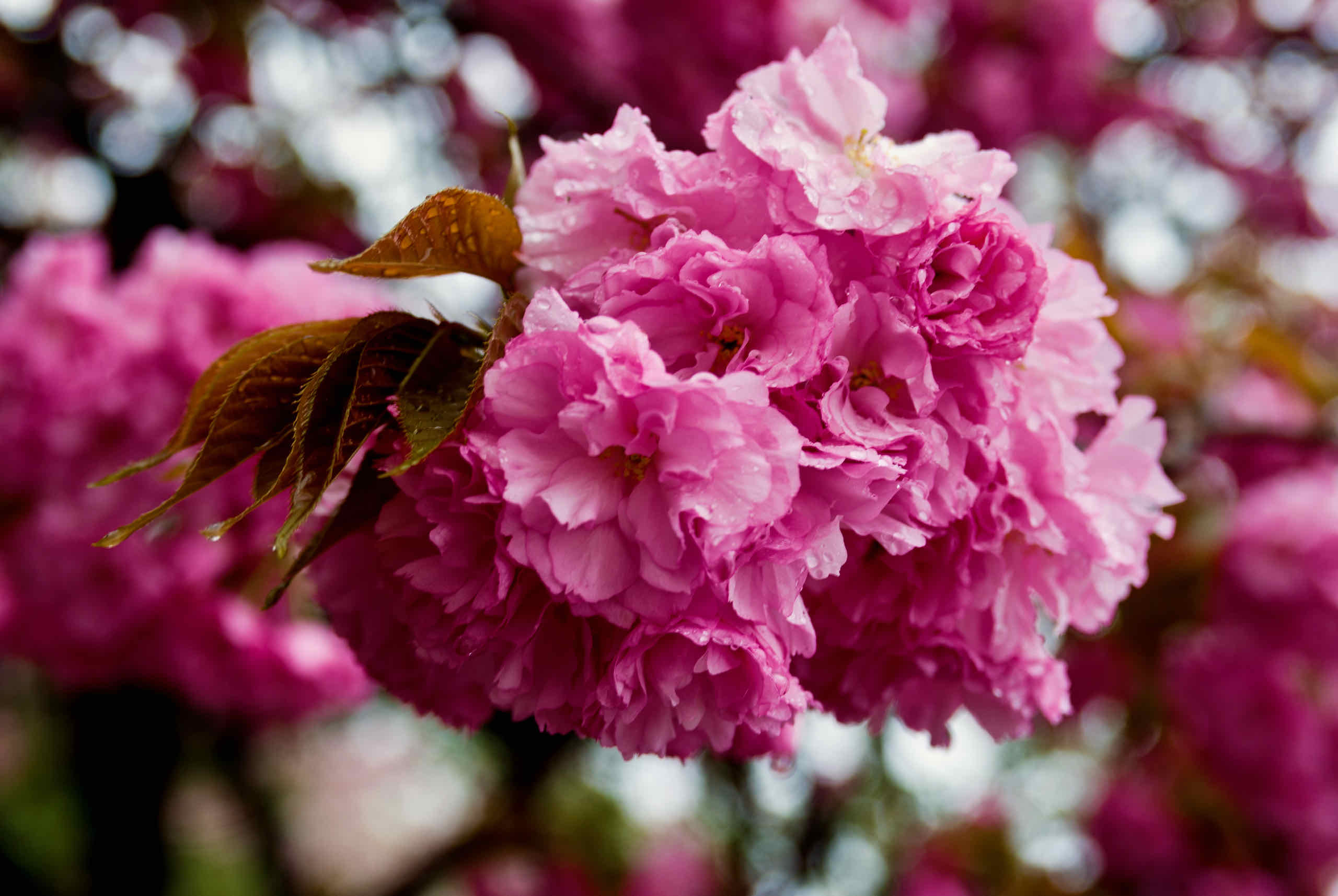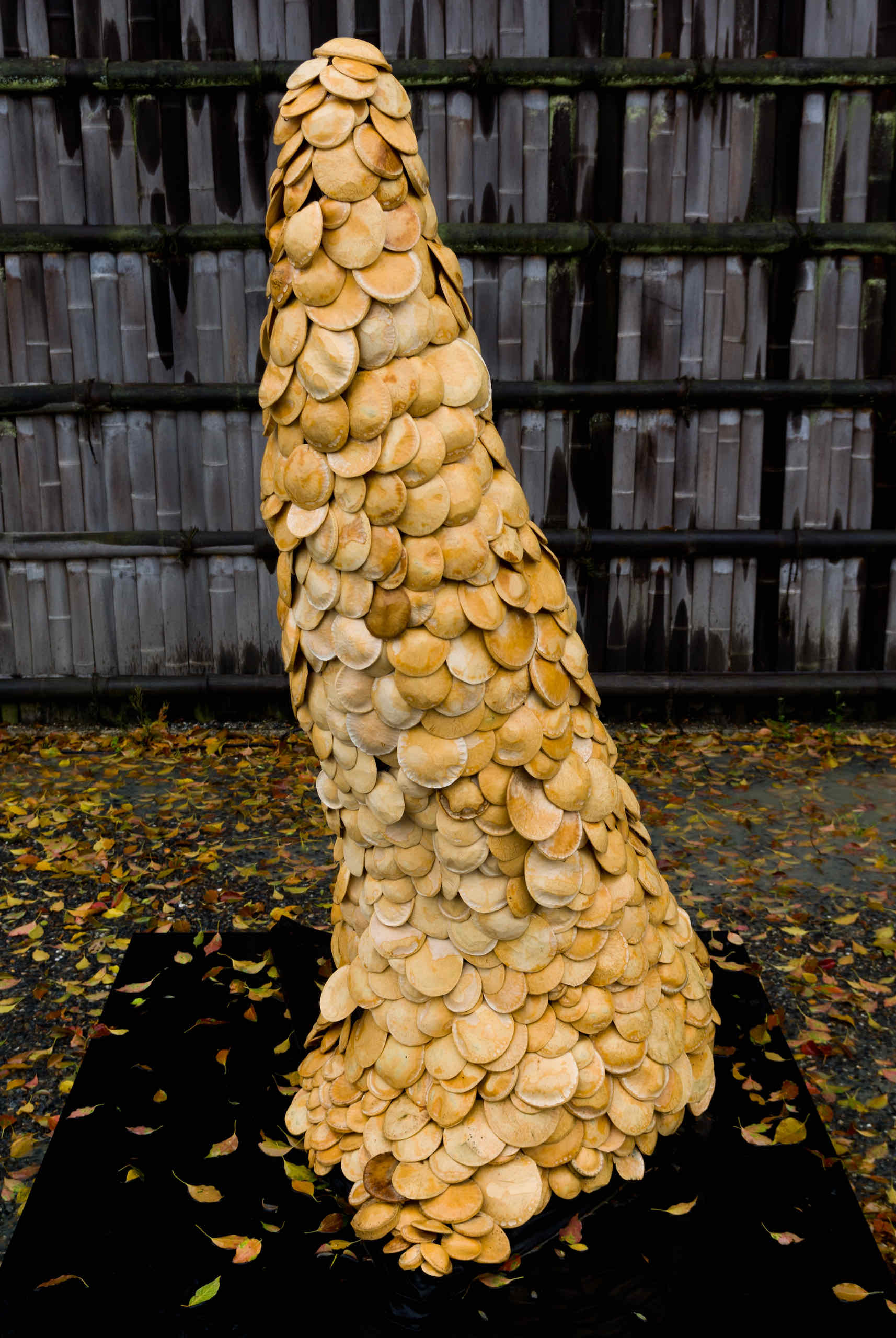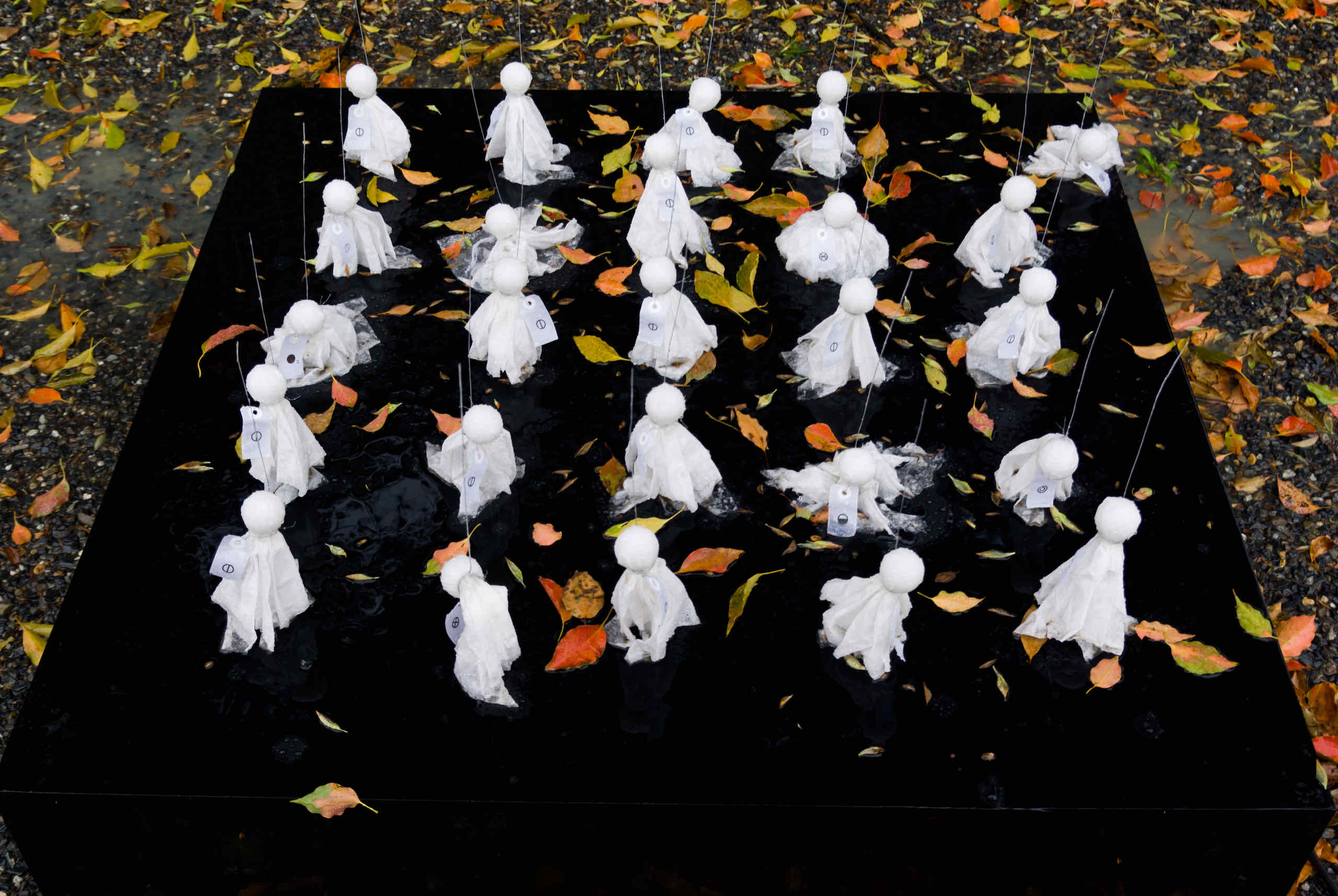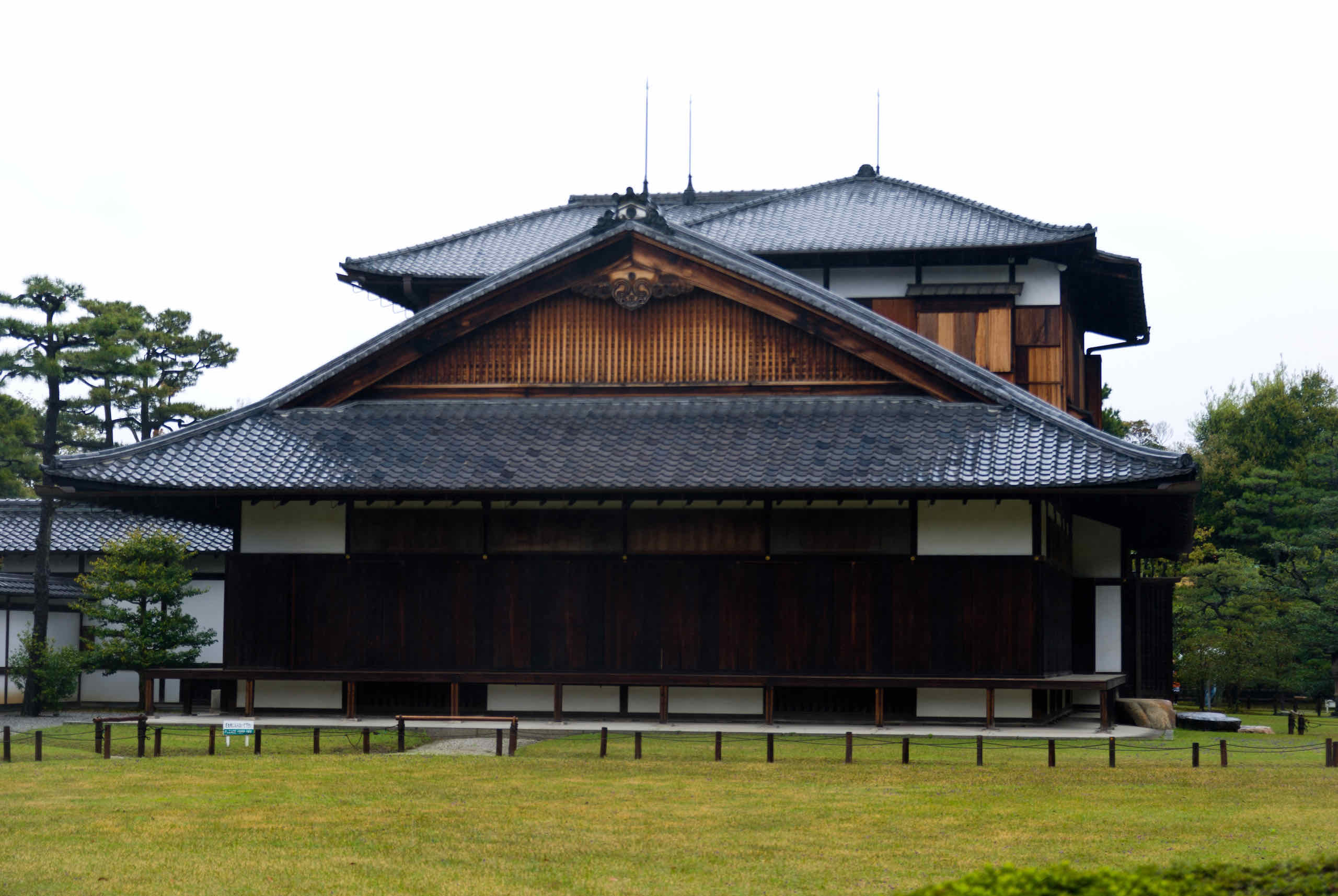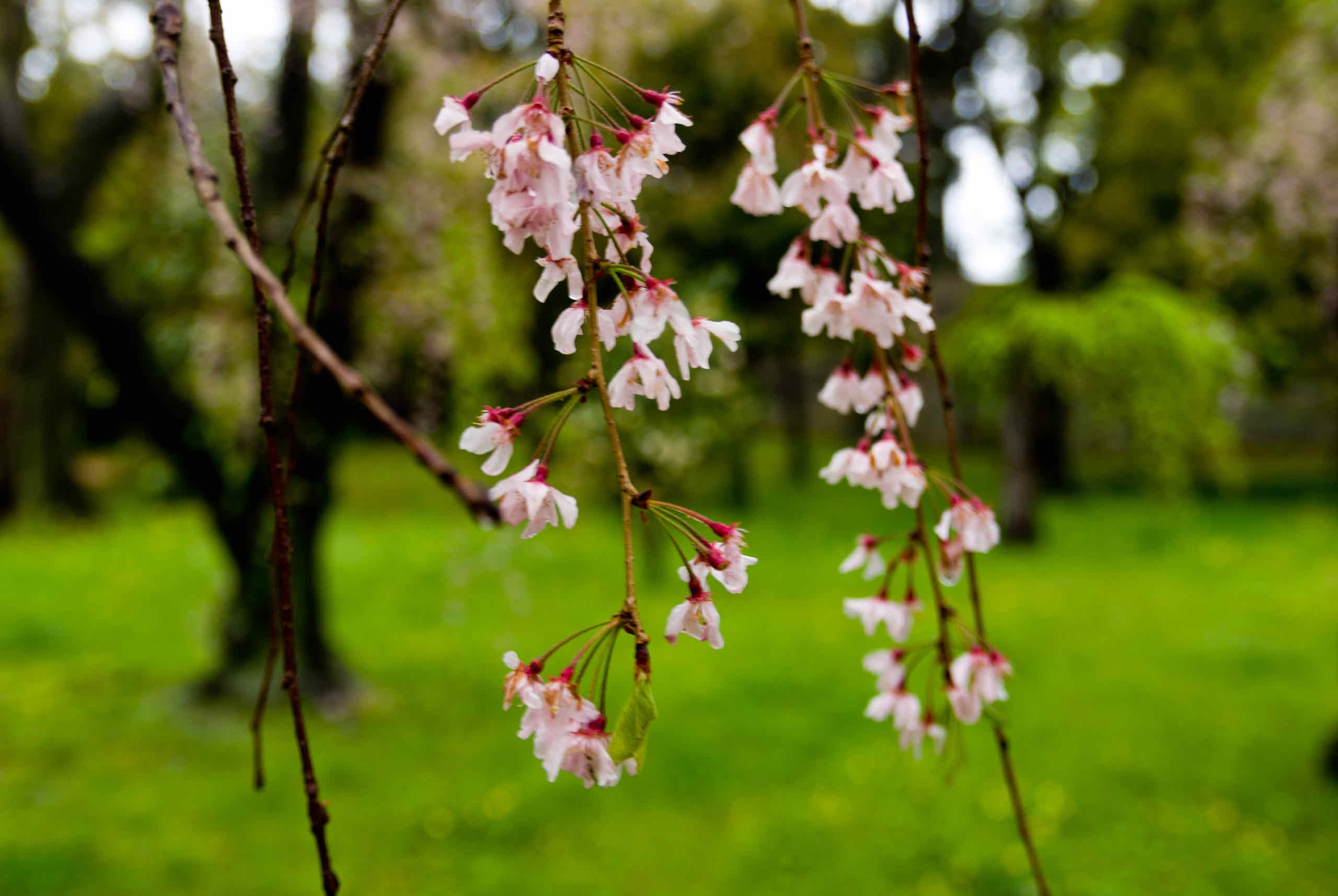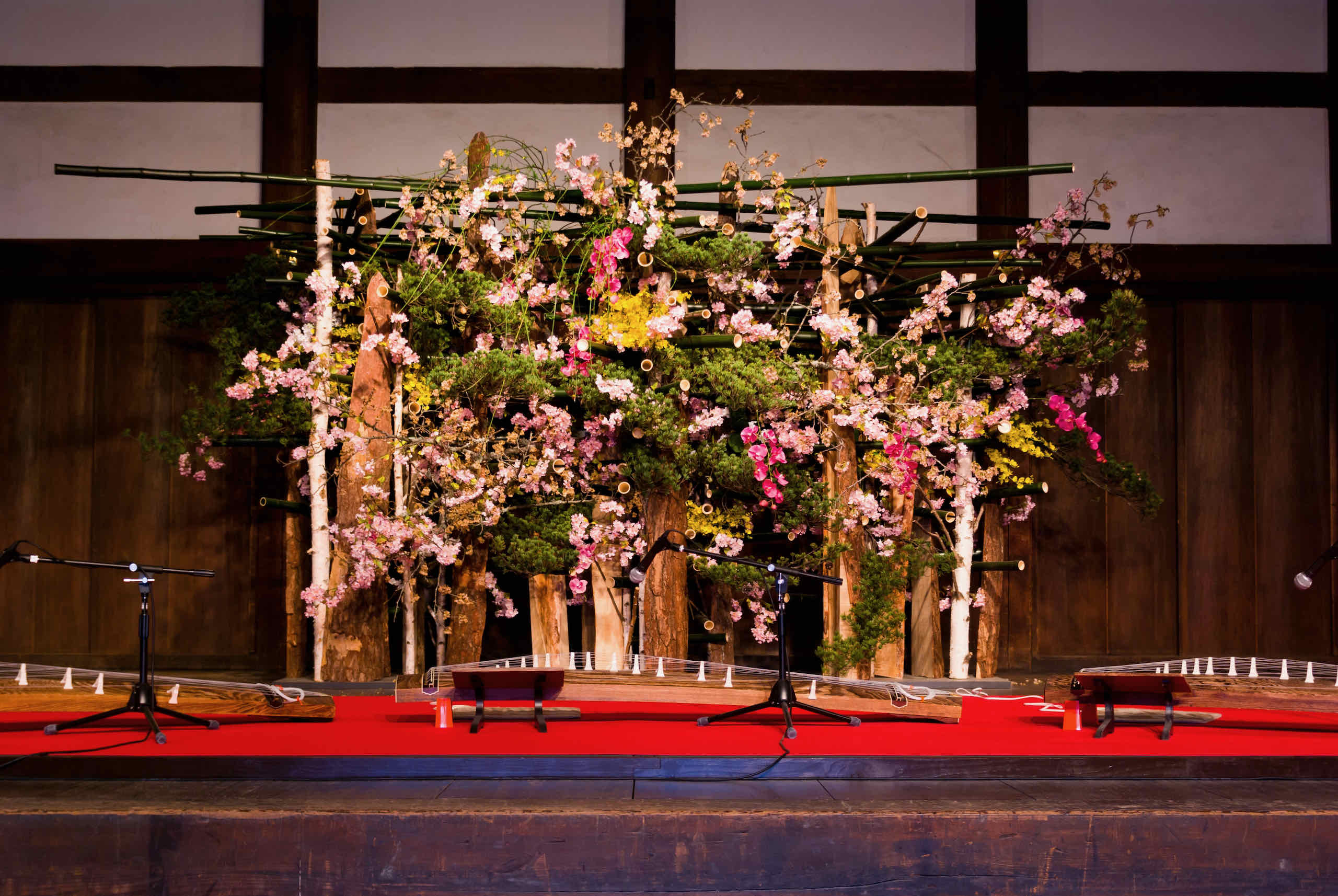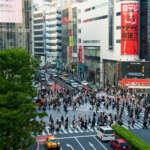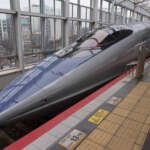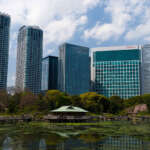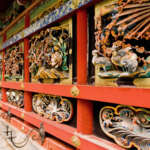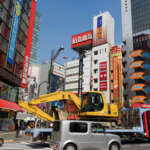Japan: Nijo Castle
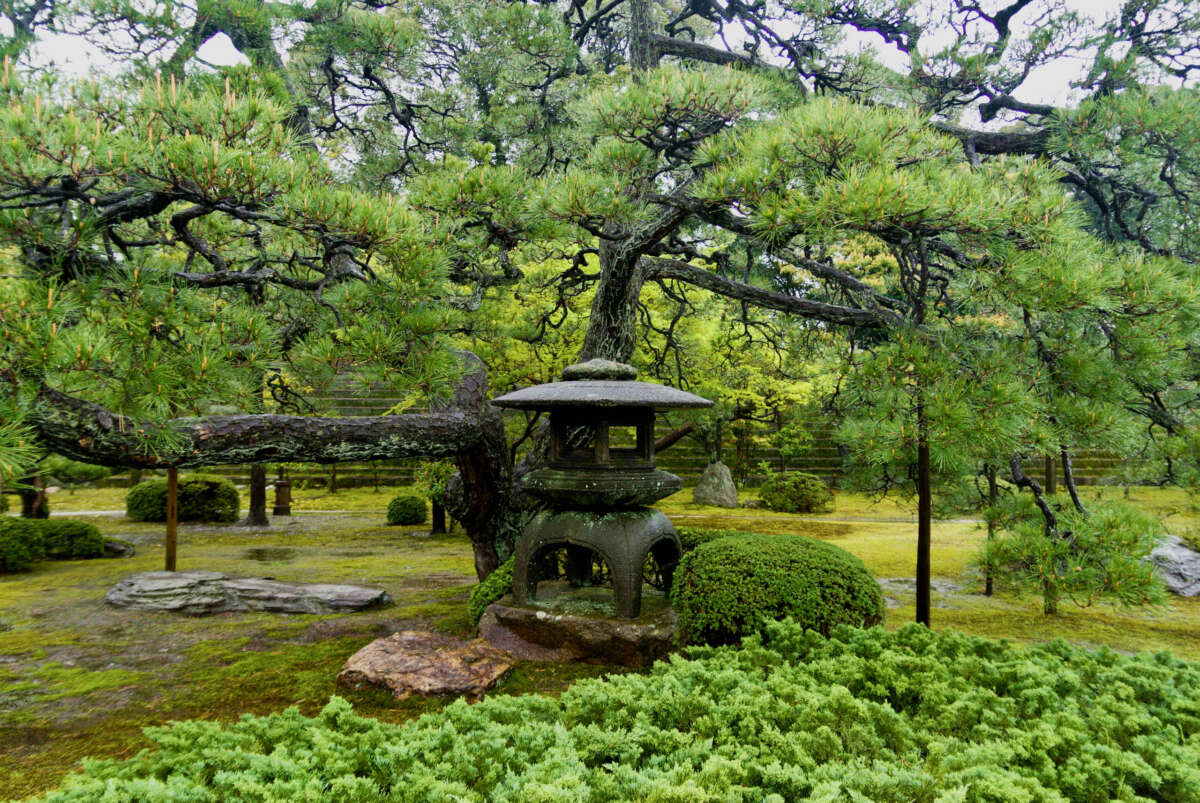
Nijo Castle (二条城) is a “flat” castle containing Ninomaru and Honmaru Palaces. It is established in Kyoto by Tokugawa Ieyasu, the first shogun of Japan.
When Tokugawa Ieyasu became the first shogun of Japan, he moved the effective capital of Japan from Kyoto to Edo (now Tokyo), but cleverly maintained Kyoto as the Imperial Court. He ordered all the other shoguns to contribute to the cost of building Nijo Castle, which was to be his residence when he is in Kyoto. It’s good to be the shogun! The presence of such a castle in Kyoto was intended to symbolise that the shogun was in fact more powerful than the Emperor. The castle grounds are open to the public but access to the palace is only on special occasions.
We visited the castle on a rainy day. I fantasised that it would be like stepping back in time and into the pages of James Clavell’s novel Shogun. The castle palaces at first seem a bit disappointing. There is no castle tower, but a series of interconnected wooden buildings made using Hinoki cypress. This is by design. The buildings separate working and living quarters as well as establish a social hierarchy both for visitors and staff.
The castle grounds itself has two concentric rings of fortifications, each with a wall and moat. The inner ward contains the Honmaru Palace which is used for living quarters, reception and entertainment rooms, entrance halls and kitchen area.
The Ninomaru Palace has various chambers for receiving visitors. Lower ranking visitors are received in the outer chambers and more trusted confidants and family members can access the more intimate chambers. The floors are constructed so that the nails rub against a jacket or clamp, creating chirping noises when anyone walks on them, a security protection measure. James Clavell refers to them in Shogun as “nightingale floors.”
Low ranking visitors can only visit the outer areas and only female attendants are allowed in the shogun’s living quarters.
There were quite a lot of cherry blossoms in the gardens, as well as displays of Japanese sculpture.
